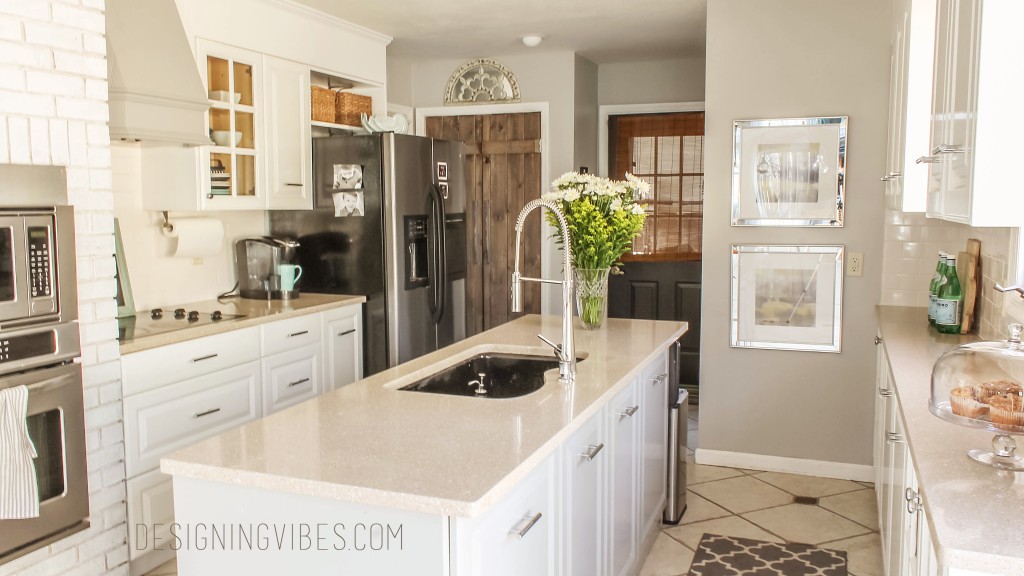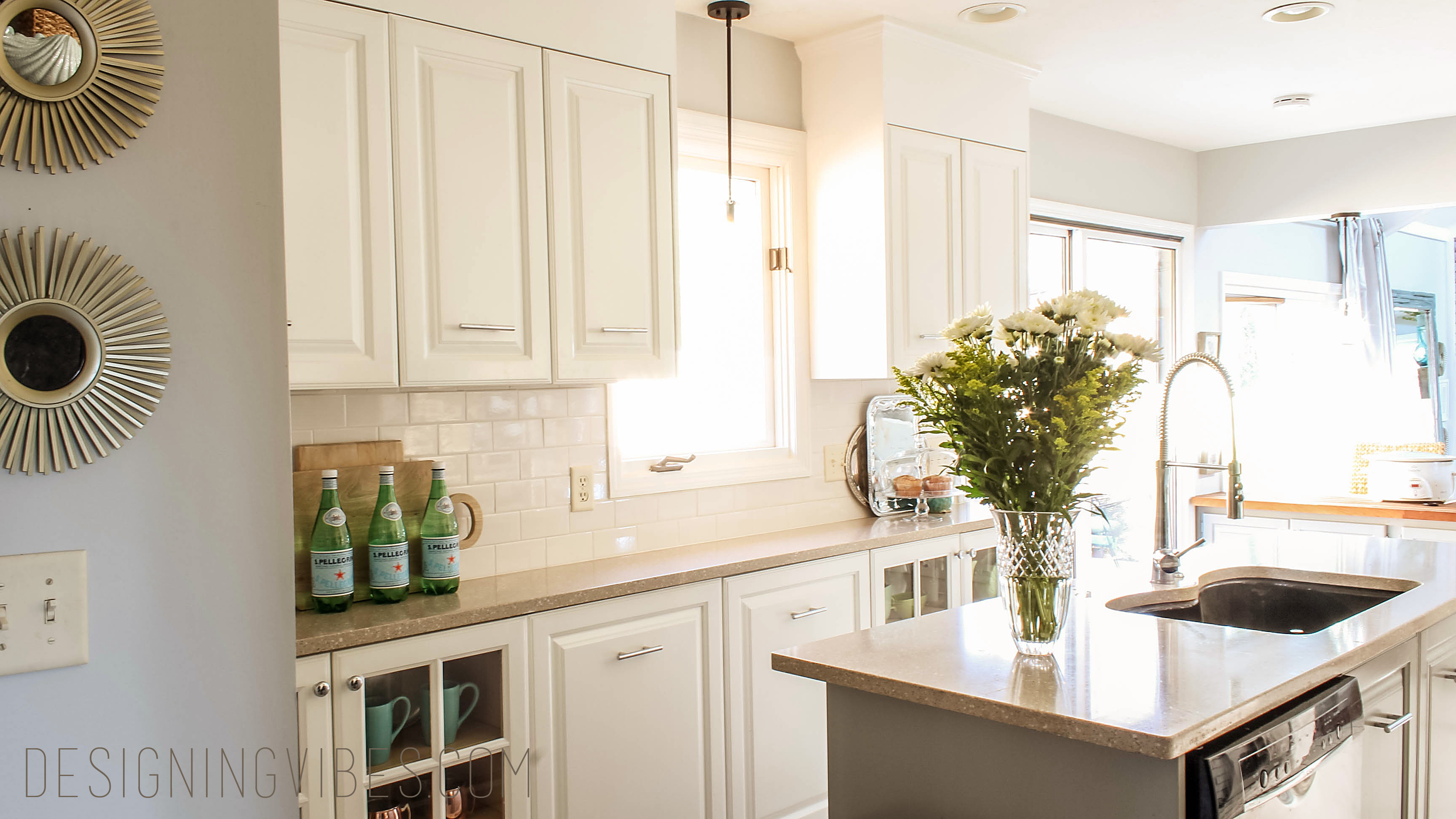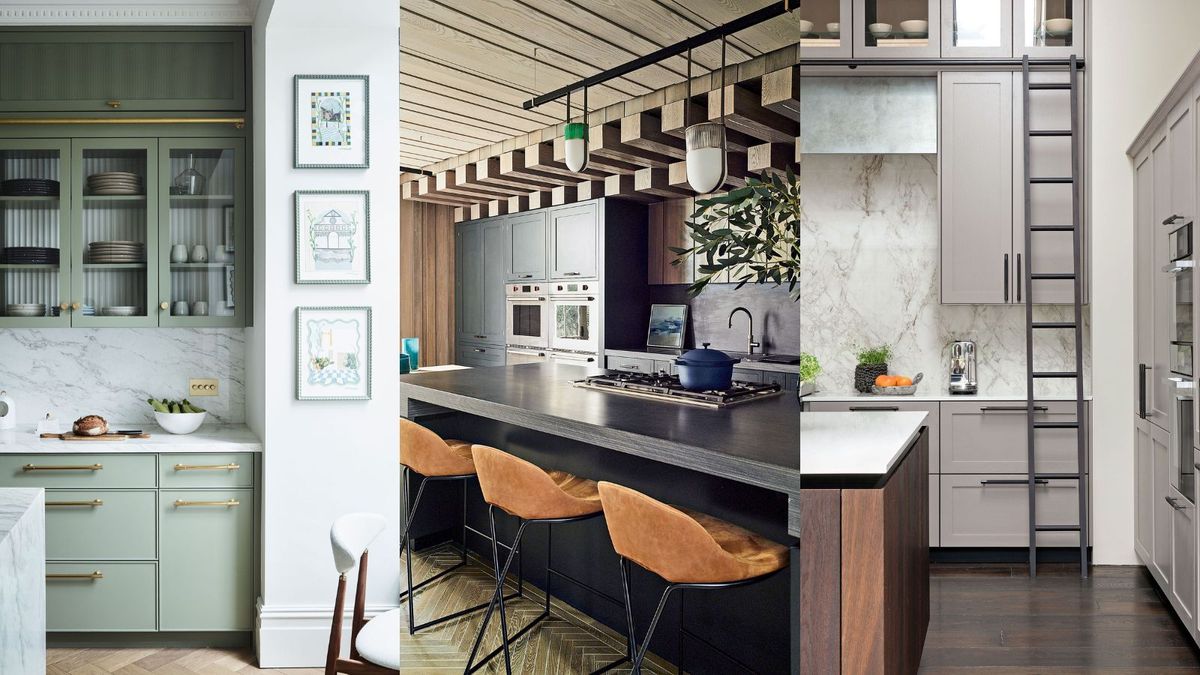Benefits of Extending Kitchen Cabinets to the Ceiling

Extending kitchen cabinets to the ceiling is a popular design choice that offers several benefits, from increased storage space to enhanced aesthetics. By maximizing vertical space, you can create a more functional and visually appealing kitchen.
Increased Storage Space
Extending cabinets to the ceiling significantly increases storage space, a valuable asset in any kitchen. This additional space allows for better organization and efficient use of available area. For instance, a standard 36-inch upper cabinet with a depth of 12 inches offers approximately 4 cubic feet of storage space. Extending this cabinet to the ceiling, assuming a standard 8-foot ceiling height, increases the storage capacity to about 10 cubic feet. This substantial increase in storage allows for the organization of various items, such as seldom-used appliances, seasonal cookware, and extra dishes.
Maximizing Vertical Space for a More Organized Kitchen, Extending kitchen cabinets to ceiling
By utilizing the vertical space to the fullest, you can achieve a more organized and efficient kitchen. This vertical organization helps minimize clutter on countertops and within drawers, creating a more spacious and functional workspace.
Aesthetic Appeal of a Seamless, Unified Look
Ceiling-height cabinets create a seamless and unified look, contributing to a more cohesive and visually appealing kitchen. The uninterrupted vertical lines of the cabinets enhance the feeling of spaciousness and draw the eye upward, adding a sense of grandeur.
Visual Impact of Extended Cabinets
Extended cabinets contribute to a more spacious and visually appealing kitchen compared to traditional cabinets. The seamless, unified look created by the ceiling-height cabinets visually expands the space, making the kitchen feel larger and more inviting. Conversely, traditional cabinets can create a sense of visual fragmentation and make the kitchen appear smaller.
Considerations for Extending Kitchen Cabinets to the Ceiling

Extending kitchen cabinets to the ceiling can maximize storage space and enhance the overall aesthetics of your kitchen. However, several considerations must be taken into account before embarking on this project.
Ceiling Height Limitations
The height of your ceiling plays a crucial role in determining the feasibility of extending cabinets to the ceiling. Standard ceiling heights in most homes range from 8 to 9 feet. If your ceiling is significantly lower, extending cabinets might result in a cramped or disproportionate appearance. It is essential to measure the ceiling height accurately and factor in the depth of the cabinets and any potential clearance required for appliances or lighting fixtures.
Structural Considerations
Extending cabinets to the ceiling may require structural modifications, particularly if the existing cabinets are not designed to support the additional weight. The weight of the cabinets and their contents can put stress on the walls and ceiling, requiring reinforcement or additional support beams. It is advisable to consult a structural engineer to assess the structural integrity of your kitchen and determine if any modifications are necessary.
Accessibility
Extending cabinets to the ceiling can make accessing items stored in the upper shelves challenging, especially for individuals with limited mobility or reach. Consider incorporating features that enhance accessibility, such as pull-down or retractable shelves, or installing a step stool for easy access.
Costs Associated with Extending Cabinets
Extending cabinets to the ceiling involves various costs, including materials, labor, and potential modifications to existing structures. The cost of materials will vary depending on the type of cabinets, finishes, and hardware. Labor costs will depend on the complexity of the project and the hourly rate of the contractor.
Materials and Tools
- Cabinets: Select cabinets that are designed for ceiling-height installation, ensuring they are sturdy and well-constructed.
- Hardware: Include hinges, drawer slides, knobs, and pulls, choosing durable and high-quality options.
- Wood: Use plywood or solid wood for building custom cabinets or adding extra support.
- Fasteners: Choose screws, nails, and other fasteners appropriate for the materials being used.
- Tools: Essential tools include a saw, drill, level, tape measure, and a stud finder.
Step-by-Step Guide for Extending Kitchen Cabinets to the Ceiling
Step 1: Planning and Preparation
- Measure the available space carefully, taking into account the ceiling height, existing cabinets, and any obstructions.
- Design the layout of the cabinets, considering storage needs, appliance placement, and aesthetics.
- Determine the materials and tools required for the project, ensuring they meet the necessary specifications.
- Prepare the work area by clearing any obstacles and protecting surrounding surfaces from damage.
Step 2: Installation
- Install the base cabinets first, ensuring they are level and plumb.
- Attach the upper cabinets to the base cabinets, using appropriate fasteners and ensuring they are securely attached.
- If necessary, install support beams or brackets to reinforce the cabinets and distribute the weight evenly.
- Install the doors and drawers, ensuring they operate smoothly and fit properly.
- Add finishing touches, such as trim, moldings, and hardware.
Step 3: Safety Precautions
- Always wear safety glasses and gloves when working with tools and materials.
- Use a ladder or scaffolding that is rated for the weight of the user and the materials being handled.
- Ensure the work area is well-lit and free of clutter.
- Be aware of electrical wires and plumbing pipes when drilling or cutting.
- Follow the manufacturer’s instructions for all tools and materials used in the project.
Design and Functionality of Extended Cabinets: Extending Kitchen Cabinets To Ceiling

Extending kitchen cabinets to the ceiling maximizes vertical space, creating a sleek and streamlined aesthetic while significantly increasing storage capacity. This design choice not only enhances functionality but also elevates the overall visual appeal of the kitchen.
Cabinet Door Styles and Hardware
The selection of cabinet doors and hardware plays a crucial role in the overall design and functionality of extended cabinets. Different door styles offer unique aesthetic qualities and practical considerations.
- Traditional Cabinet Doors: These doors, often featuring raised panels or intricate carvings, provide a classic and elegant look. They are typically made of wood, offering durability and a warm, natural feel.
- Modern Cabinet Doors: Modern cabinet doors are characterized by clean lines, minimalist designs, and sleek finishes. They often feature flat panels, recessed handles, or integrated pulls.
- Glass Cabinet Doors: Glass doors allow for visual display of items stored within the cabinets, adding a touch of sophistication and showcasing decorative pieces. They are available in various styles, including frosted, etched, or clear glass.
| Door Style | Hardware | Advantages | Disadvantages |
|---|---|---|---|
| Traditional | Knobs, pulls, hinges | Classic look, durability | May be more expensive, can collect dust |
| Modern | Recessed handles, integrated pulls, hinges | Sleek and minimalist, easy to clean | May be less durable than traditional styles |
| Glass | Knobs, pulls, hinges | Allows for visual display, adds elegance | May not be suitable for all storage needs, can be fragile |
Innovative Storage Solutions
Extended cabinets offer a unique opportunity to incorporate innovative storage solutions, maximizing every inch of available space.
- Pull-Down Shelves: These shelves are mounted on a track system, allowing for easy access to items stored high up in the cabinets. They are particularly useful for storing bulky items like pots, pans, or baking sheets.
- Hidden Compartments: Extended cabinets can be designed with hidden compartments or drawers that are concealed behind the cabinet doors. These compartments can be used to store items that are not frequently accessed or that need to be kept out of sight.
- Lazy Susans: Lazy Susans are rotating platforms that allow for easy access to items stored in the back corners of cabinets. They are ideal for storing spices, canned goods, or other frequently used items.
Lighting and Ventilation
Proper lighting and ventilation are essential for extended cabinets, ensuring visibility and preventing moisture buildup.
- Under-Cabinet Lighting: Installing under-cabinet lighting provides ample illumination within the cabinets, making it easier to locate items. LED lights are energy-efficient and provide bright, cool light.
- Ventilation System: Incorporating a ventilation system within the cabinets helps to prevent moisture buildup, which can lead to mold or mildew growth. This can be achieved through small vents or fans.
Extending kitchen cabinets to ceiling – Extending kitchen cabinets to the ceiling maximizes storage space and creates a sleek, modern aesthetic. While this design choice optimizes vertical space, it can also present a challenge for securing valuable items like keys. A wall mountable key cabinet safe with combination lock provides a secure and discreet solution for storing keys within the kitchen, ensuring their safety and accessibility.
The addition of this safe complements the clean lines of ceiling-height cabinets, maintaining a cohesive design while enhancing security.
Extending kitchen cabinets to the ceiling maximizes storage space and creates a visually appealing, streamlined look. This approach often involves using a suspension rail system for the upper cabinets, ensuring they are securely mounted and can withstand the weight of heavy items.
A suspension rail for wall cabinets offers a robust and adjustable solution, allowing for easy installation and future modifications. By extending cabinets to the ceiling and utilizing a suspension rail system, homeowners can maximize their kitchen’s functionality and aesthetic appeal.
